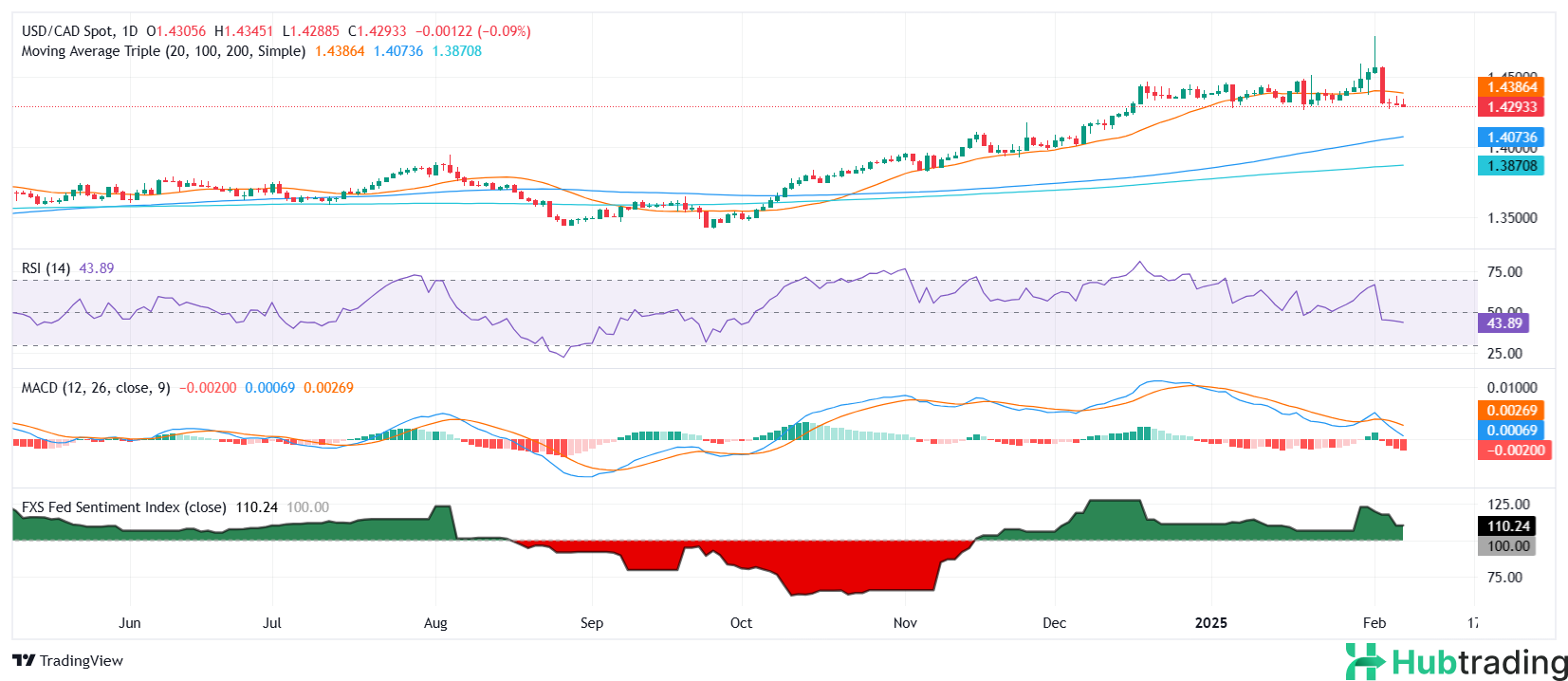- USD/CAD retreats to 1.4305 following weaker-than-expected US Nonfarm Payrolls data.
- US unemployment drops to 4%, while hourly earnings remain steady.
- Canadian unemployment falls to 6.6%, but still exceeds expectations.
The USD/CAD pair retreated to 1.4305 following the release of January's Nonfarm Payrolls (NFP) data, which came in well below expectations. The US economy added only 143K jobs, far from the anticipated 307K, causing the US Dollar to pull back. However, the unemployment rate dropped to 4%, in line with projections, while wage growth remained steady. Average hourly earnings increased by 0.5% month-over-month, matching expectations, and the annual wage growth rose to 4.1%, exceeding the 3.9% estimate. The labor force participation rate also slightly improved to 62.6%.
In Canada, the unemployment rate fell to 6.6%, improving from 6.8%, but still above the expected 6.7%. This indicates some improvement in Canada's labor market, though ongoing softness may keep the Bank of Canada (BoC) cautious regarding future rate hikes.
USD/CAD Technical Outlook

USD/CAD retraced to 1.4305, showing a moderate pullback. Technical indicators like the Relative Strength Index (RSI) and Moving Average Convergence Divergence (MACD) are weak on the daily chart, signaling continued bearish pressure in the short-term. The pair has lost its 20-day Simple Moving Average (SMA), but buying interest may persist if the 1.4300 support zone holds.





